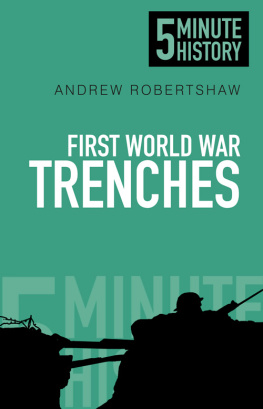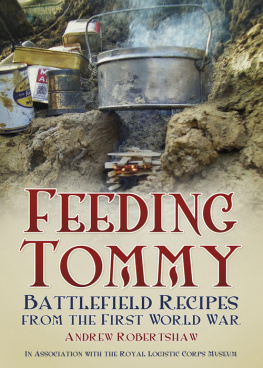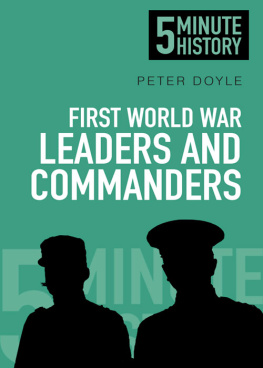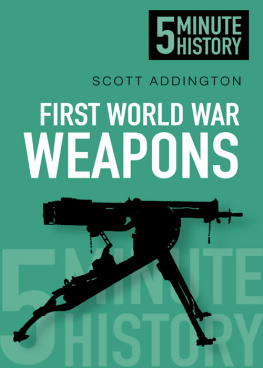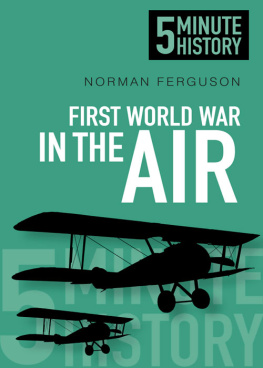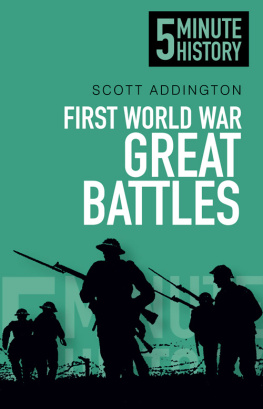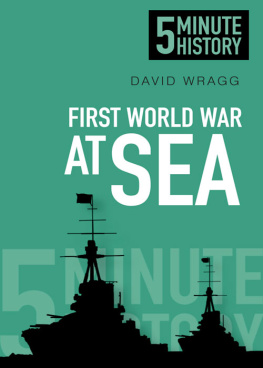
CONTENTS
MANY PEOPLE IMAGINE that the war started on the Western Front in 1914 and ended in 1918, was fought entirely in trenches and that there was little movement or open warfare over the more than four years of the struggle. This book aims to explain how trench warfare came about, to put this style of conflict in a historical perspective and to explore what caused the deadlock on the Western Front. It will examine the routine of trench warfare, the experiences of men on both sides of no-mans-land and how the trench stalemate began in 1914 and ended during 1918.
In films and on television the First World War is portrayed as being about the battles. The Somme in 1916 or Passchendaele in 1917 are presented as being typical experiences for the soldiers on the Western Front. In these on-screen presentations, trenches are places from which attacks over no-mans-land are launched or repulsed with bloody casualties. Soldiers do not live in trenches, they only die, and the day-to-day experience of being in a hole in the ground is defined by shelling, gas, constant rain and, perhaps, war poetry. I want to use this Five Minute History to explain the details of life in the trenches in addition to exploring the day-to-day reality of the men who took part in the war on the Western Front.
Since 1985, first at the National Army Museum in London and then in other museums, schools, colleges and universities, I have taught up to half a million young, and not so young, people about the First World War. I have used my illustrated presentation Eye Deep in Hell? note the question mark with hundreds if not thousands of groups. Responses to this talk have ranged from questioning to outright disbelief. Some people believe that what they see on the screen in All Quiet on the Western Front or Blackadder Goes Forth are adequate representations of history and that anything else is clearly wrong. One veteran of the First World War described his experience of the trenches as being 90% bored stiff, 9% frozen stiff and 1% scared stiff. Another suggested that his war was experienced in colour, not the black and white of the photographs and original film we see today. If this book succeeds, I want the reader to have an understanding of the 99 per cent of trench warfare the men experienced on an everyday basis and to bring some colour into the sepia world of 191418.
ASR,
Spring 2014
BY OCTOBER 1914, as we will see, warfare on the Western Front, from the Swiss border in the south to the coast of the North Sea in Belgium, was locked into static trench warfare. Both sides had dug in either side of a strip of land, which became known as no-mans-land. No one could move in this area in daylight and both sides worked in the night, when darkness allowed men to dig and erect barbed wire. However, this was not the first time soldiers had worked under similar conditions.
In previous centuries, when an army was dispatched to surround and besiege a castle or town, the use of cannon or siege engines on both sides meant that the attackers had to protect themselves from enemy fire. The defenders had the advantage of earth or stone defences which had been designed and built as a permanent protection, whereas their opponents had to provide themselves with some means of cover while being close enough to the place they were besieging to use their artillery. The result of this was that besiegers would surround their objective and then start to dig in at night, when their opponents would have difficulty seeing and shooting at them.
I WAS THERE
I was on a working party the other day down at the trenches, and I took one of the Minie rifles and went to the front and I picked off three men at about eight hundred yards.
Lieutenant Vaughan, in the siege lines at Sevastapol, 1854
DID YOU KNOW?
A private soldier in the modern Royal Engineers is called a sapper, in historical reference to the work of these soldiers in digging saps.
This work was planned and started by engineers the technical service responsible for constructing defences. The engineers were responsible for digging the siege lines or zaps , as the Italians called them. These curving trenches saps to the British were dug into the ground and the excavated material was thrown up or packed into bags or woven baskets of sticks called gabions. The siege lines of saps surrounded the place under siege and were gradually extended forward towards its defences. Night was always the safest time to work, but both sides used artillery or individual marksmen with accurate muskets, like todays snipers, to pick off the unwary enemy soldier. A soldier from the First World War transported back in time to a siege of the time of the Duke of Marlborough or even Napoleon would have been familiar with the layout of the trenches that made up the siege works. The big difference between his trenches and those of earlier periods was their extent not across an entire country, only around a city or castle and for the duration of the fighting. This was normally measured in weeks or months, as the defenders had limited resources of food and unless help came they would either face starvation or the horrors of an all out assault by the attackers.
Advances in weapons technology meant that the techniques of siege warfare were increasingly used on the battlefield. By the American Civil War, 186165, individual soldiers could hit targets at 1,000 yards. This compared to 100 yards a generation earlier. One result was that both sides took to digging pits for protection if a battle became a stalemate. Between June 1864 and March 1865, the Confederate defenders of St Petersburg in Virginia found themselves facing a modern version of siege warfare, which went on for nearly ten months. The Union attackers used mining at one point and exploded a gunpowder charge under enemy lines in the expectation of breaching their defences. This attack was unsuccessful but represented a small-scale representation of the Western Front fifty years later.
I WAS THERE
At Modder River there was no human interest just a bare plain and 800 yards off, a line of trees; not a Boer, or even a puff of smoke to be seen all day; only, if one raised his head, the ping of a bullet and the sight of another dead or wounded comrade.
Sir H.E. Colville, the Battle of the Modder River in the Boer War
DID YOU KNOW?
In 1865, Union forces succeeded in blowing up a mine filled with gunpowder under the Confederate trenches at St Petersburg in Virginia. The attack that followed was a disaster.
The armies of Europe rejected the lessons of the vast citizen armies of the American Civil War and, although there were sieges in the Franco-Prussian War, 187071, nothing resembling trench stalemate reoccurred until the Second Boer War in South Africa, 18991902. Here barbed wire, which had been invented in 1874, was combined with automatic weapons and this resulted in some brief periods of trench conflict. Trenches were used by the Boers defending positions such as Colenso, and when surrounded by the British at Paardeberg the following year, the Boers dug in for a brief period before being forced to surrender. Isolated British garrisons held out during Boer sieges at Mafeking and Ladysmith behind wire defences and trenches, but these were isolated incidents in a war of movement.
However, in 1904, when Russia went to war with Japan, the attack on the Russian-held town of Port Arthur provided an example of how modern weapons, tactics and defences might influence future warfare. Although only a siege, the Japanese attacks used artillery and mortars against Russian defences which featured true machine guns, barbed wire and searchlights combined with the use of shovels and pickaxes to dig saps that gradually moved closer to the defenders positions. The decider in this conflict was the mass use of Japanese artillery and the Russian defences were eventually breached, ending a five-month siege. This siege was a miniature version of the future Western Front in which the outstanding feature was the heavy loss of life on both sides.

